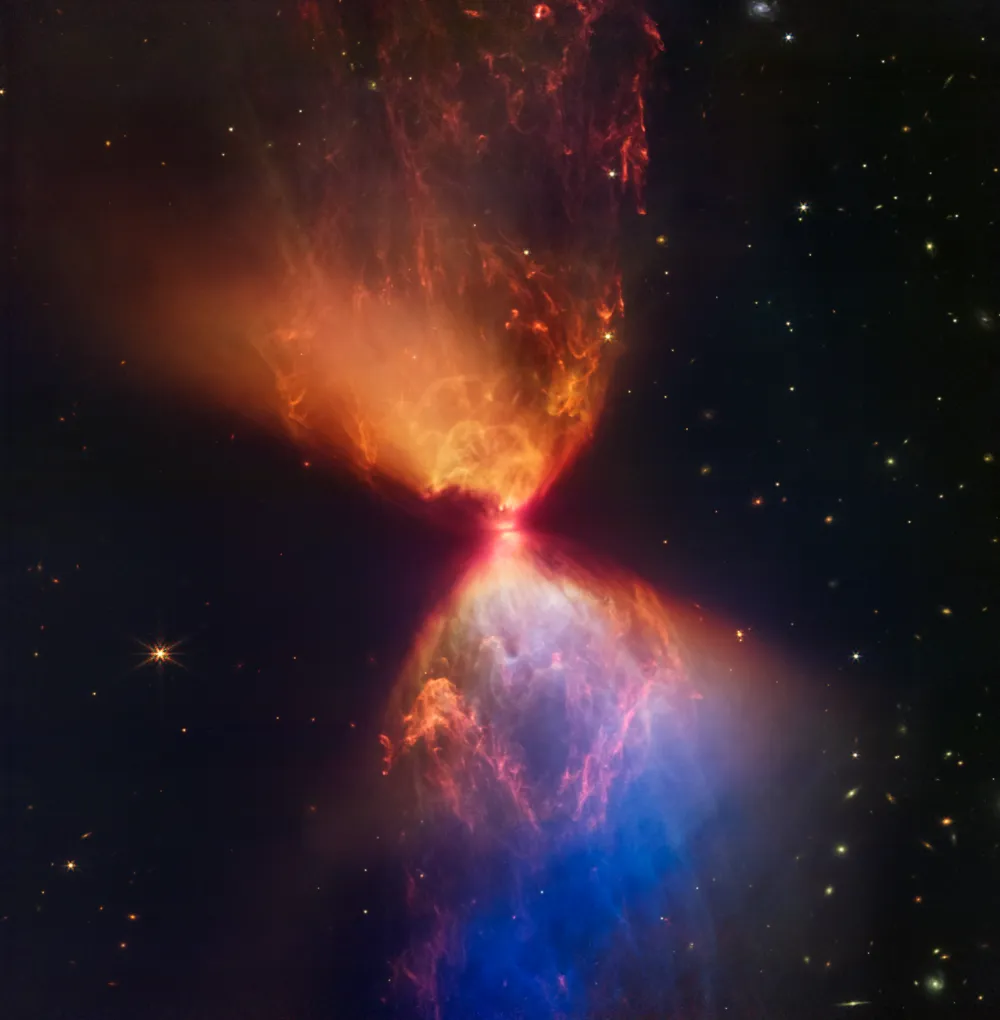The James Webb Space Telescope has captured an incredible image showing a ‘cosmic hourglass’, which is in fact a protostar lying within a dark cosmic cloud.
The star is a true infant, just 100,000 years old: the blink of an eye in cosmic terms. Indeed, the protostar is thought to be in the earliest stages of star formation.
See the latest James Webb Space Telescope images

Once hidden from sight within dark cloud L1527, the features of this protostar have been revealed in a new light by the Webb Telescope’s Near-Infrared Camera (NIRCam).
The protostar is located within the narrow section of the hourglass shape, but the dark line stretching across the middle of this ‘neck’ section is a protoplanetary disk surrounding the star.
Light from this protostar glows above and blow the disk, illuminating the surrounding cosmic gas and dust.
This infrared image has been coloured to represent the structure of the billowing clouds of gas and dust, which are created as material is projected outwards into space and collides with surrounding interstellar matter.
Blue areas indicate where the dust is thinnest, while orange shows where dust is thicker, blocking the blue light and creating a reddish hue instead.
The protostar is still a long way from becoming a fully-fledged star, and as a result it is not yet undergoing nuclear fusion of hydrogen, and is not generating its own energy.
But, as more and more cosmic dust is drawn into the centre where the protostar is located, it will spiral around the still-forming star, creating an accretion diskthat will continue to feed the star until it becomes massive enough to ignite nuclear fusion.
This disk seen as a grey streak at the centre of the image is about the size of our own Solar System.
Perhaps Webb has offered us a glimpse of what our own Sun must have looked like in its infancy.

